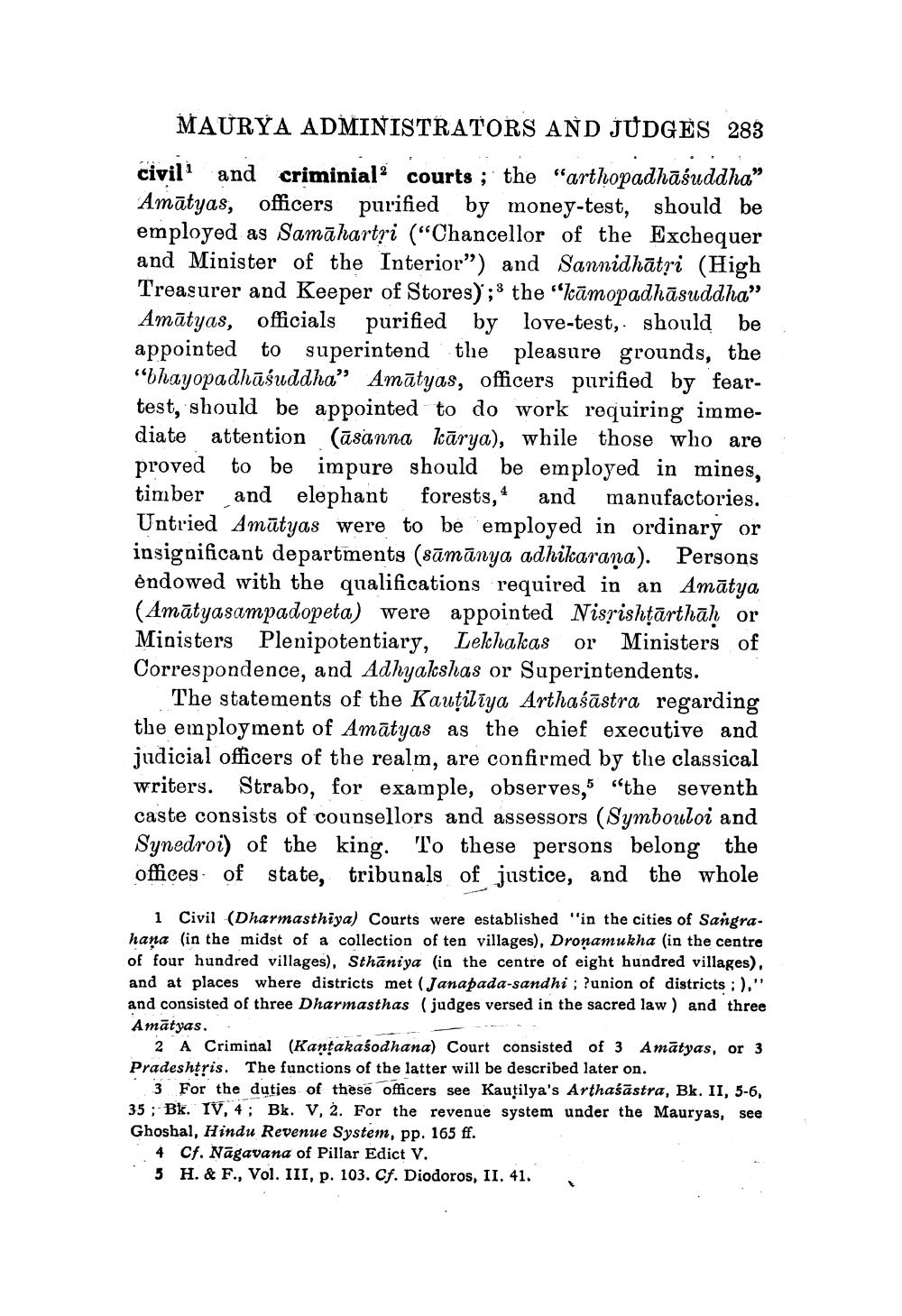________________
MAURYA ADMINISTRATORS AND JUDGÈS 283 civili and criminialcourts ; the "arthopadhāśuddha" Amātyas, officers purified by money-test, should be employed as Samāhartri (“Chancellor of the Exchequer and Minister of the Interior") and Sannidhātri (High Treasurer and Keeper of Stores);: the "kāmopadhāsuddha” Amātyas, officials purified by love-test, should be appointed to superintend the pleasure grounds, the "bhayopadhūśuddha” Amātyas, officers purified by feartest, should be appointed to do work requiring immediate attention (āsanna kārya), while those who are proved to be impure should be employed in mines, timber and elephant forests, and manufactories. Untried Amātyas were to be employed in ordinary or insignificant departments (sāmānya adhikarana). Persons endowed with the qualifications required in an Amātya (Amātyasampadopeta) were appointed Nisrishțārthāh or Ministers Plenipotentiary, Lekhakas or Ministers of Correspondence, and Adhyakshas or Superintendents.
The statements of the Kauțilīya Arthaśāstra regarding the employment of Amātyas as the chief executive and judicial officers of the realm, are confirmed by the classical writers. Strabo, for example, observes, “the seventh caste consists of counsellors and assessors (Symbouloi and Synedroi) of the king. To these persons belong the offices of state, tribunals of justice, and the whole
1 Civil (Dharmasthiya) Courts were established "in the cities of Sangra. hana (in the midst of a collection of ten villages), Dronamukha (in the centre of four hundred villages), Sthaniya (in the centre of eight hundred villages) and at places where districts met (Janapada-sandhi ; ?union of districts ;)," and consisted of three Dharmasthas (judges versed in the sacred law) and three Amātyas.
2 A Criminal (Kantakaśodhana) Court consisted of 3 Amātyas, or 3 Pradeshtris. The functions of the latter will be described later on.
3 For the duties of these officers see Kautilya's Arthaśāstra, Bk. II, 5-6, 35; Bk. IV, 4; Bk. V, 2. For the revenue system under the Mauryas, see Ghoshal, Hindu Revenue System, pp. 165 ff.
4 Cf. Nāgavana of Pillar Edict V. 5 H. & F., Vol. III, p. 103. Cf. Diodoros, II. 41. .




